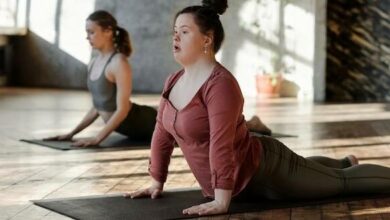AMAC Urges Seniors to Enter Into a ‘Fitness Protection Program’
Americans are living longer than ever before. The average lifespan in the U.S. has doubled over the past 100 years. In 1918, you were lucky if you made it past 40 years of age. Today we’re living into our 80s and the number of people living past 100 is at an all-time high. Senior fitness has become a major industry.
Fitness expert Jena Walther, Exercise Physiologist at the Scripps Center for Executive Health in La Jolla, CA, says more than half of us who are over 55 don’t even meet the minimum recommended guidelines for exercise. They lack confidence, are afraid they’ll hurt themselves or are just plain uninterested. And, it gets worse as they get older.
“In addition to making older folks feel better, the advantages of keeping fit include the ability to prevent some of the more serious diseases associated with aging, including Type 2 Diabetes, cardiovascular disease and even Alzheimer’s,” according to Dan Weber, president of the Association of Mature American Citizens [AMAC].
Weber is encouraging AMAC’s membership to enter into what he calls a “Fitness Protection Program.” He says, “As we get older we tend to seek ways to avoid activities that involve exertion. To quote one anonymous wag: the only exercise some people get is jumping to conclusions, running down their friends, sidestepping responsibility, and pushing their luck. We need to overcome inertia and find ways of improving our heart rates and blood sugar levels by developing good exercise habits. Of course, it is important to check with your doctor before beginning any regimen that involves strenuous activities.”
Exercise is particularly good at fending off Type 2 Diabetes and other chronic conditions. The World Health Organization says that a healthy diet, increased physical activity and avoiding tobacco use can prevent 80% of premature heart disease, 80% of type 2 diabetes cases and 40% of cancers. And, according to the Alzheimer’s Association: ”Exercise or regular physical activity might play a role in both protecting your brain from Alzheimer’s disease and other dementias, and also living better with the disease if you have it.”
AMAC suggests that, ideally, your own Fitness Protection Program will include formal exercise routines – even if it is going for a walk around the block. But being active doesn’t have to be limited to your workout times. There are plenty of ways to become more active as you go about your day. For example:
- When you are out and about, always choose stairs over the elevator, park at the far end of the parking lot when arriving at appointments and meetings, walk down every isle of the grocery store while shopping, practice balancing skills while standing in line, do neck rolls while waiting at a stoplight.
- When you are at home, do a set of wall pushups while waiting for water to boil, vigorously vacuum, tend to the garden, sweep the sidewalk, rake leaves, lift weights while watching the news, try toe-raises while talking on the phone, do knee bends after sitting for a long period of time.
Says Weber, “you will feel better if you keep active. Guaranteed!”
The Association of Mature American Citizens [AMAC] [https://www.amac.us] is a senior advocacy organization that takes its marching orders from its members. The organization acts and speaks on their behalf, protecting their interests and offering a practical insight on how to best solve the problems they face.
Exercise and fitness as you age: tips to get fit and stay fit







